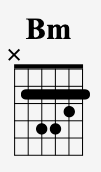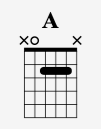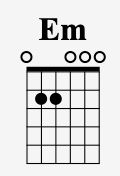Comfortably Numb Guitar Lesson (Pink Floyd)
Today I want to share with you how I play what is often cited as one of the greatest rock songs ever recorded.
“What song is this?” you may be wondering…
I am talking about “Comfortably Numb” by Pink Floyd.
This epic composition has some INCREDIBLE guitar playing in it. And I am going to be breaking it down from top to bottom in this ultimate Pink Floyd Comfortably Numb guitar lesson.
So grab your guitar, tune-up, and let’s get started!
Who wrote Comfortably Numb?
"Comfortably Numb" is an iconic song by the British rock band Pink Floyd. The tune was written by Roger Waters and David Gilmour, two of the band's primary songwriters. It was released on Pink Floyd's 1979 album, The Wall. The song is one of the most signature and lasting tracks in the band's catalog.
"Comfortably Numb" has it all, from powerful guitar solos, to haunting lyrics, and emotional depth. It features dual lead vocals, with Waters singing the verses and Gilmour taking over for the choruses and guitar solos.
The lyrics convey a sense of detachment and alienation, fitting the overall concept of "The Wall," which is a rock opera exploring themes of isolation and mental breakdown.
The song was recorded at multiple locations during the making of the "The Wall" album.
The initial basic tracks were recorded at Britannia Row Studios in London. The guitar solos were recorded at the famous Abbey Road Studios in London. The result was a rich and layered production that contributed to the song's epic sound.
"Comfortably Numb" has received widespread acclaim and recognition. It's often cited as one of the greatest rock songs ever recorded. While it was not released as a single in the United Kingdom, it received radio airplay and became a fan favorite. In the United States, a live version of the song was released as a single, reaching No. 27 on the Billboard Hot 100 chart.
Pink Floyd's live performances of "Comfortably Numb," particularly during their "The Wall" tour, are legendary. The song live often featured wild stage effects, including a massive wall being built on stage.
Comfortably Numb Guitar Chords
You’ll need to know 8 chords to play “Comfortably Numb” on guitar. Let’s start with the chord shapes and then we’ll break down the various sections.
Bm is the first chord in the song. I play this as a bar chord at the 2nd fret with the root on the 5th string like this:

A is played in open position and I just use my index finger as a bar like this:

G I play as a typical 4-finger G chord, however, I often remove my index finger and this results in a more rock guitar sound like this:

Em is played using all six strings like this:

D is played from the 4th string down like this:

G/B comes in later in the song as a passing chord. For this shape, I use just four strings like this:

C is played from the 5th string down like this:

Finally, Asus4 I play by adding my ring finger to the one-finger A chord we covered above:

What is the tuning for Comfortably Numb?
"Comfortably Numb" by Pink Floyd is played in standard tuning, which is E-A-D-G-B-E from the lowest-pitched string to the highest-pitched string.
Unlike many epic guitar songs that are tuned down or to alternate tunings, there are no unusual tunings required to play this song. You can use standard tuning on your guitar to play both the rhythm and the iconic guitar solos in "Comfortably Numb."
Is Comfortably Numb hard to play on guitar?
"Comfortably Numb" is known for its intricate and iconic guitar solos, particularly the two solos played by David Gilmour in the song. These solos are often considered some of the greatest guitar solos in rock music history and can be quite challenging to play, even for experienced guitarists.
The difficulty of playing "Comfortably Numb" on guitar can vary depending on your skill level and which parts of the song you're attempting to play.
Here's a breakdown:
- Rhythm Guitar: The rhythm guitar parts, which include the chord progressions and the main riff, are generally more accessible and can be played by intermediate guitarists. The song features standard open chords and a few bar chords, making it approachable for those with some playing experience.
- Solos: The guitar solos in "Comfortably Numb" are where the real challenge lies. David Gilmour's solos are known for their expressive bends, phrasing, and feel. The second solo, in particular, is intricate and requires a good command of bending and vibrato techniques. Playing the solos note-for-note as Gilmour did is incredibly difficult and will require advanced guitar skills.
What key is Comfortably Numb in?
“Comfortably Numb” is in the key of Bm/Dmajor.
Comfortable Numb Solo 1
Gilmour’s first guitar solo begins right after the first chorus. It’s an 8-bar solo section and then it repeats the chorus refrain with the lyrics:
“I have become comfortably numb…”
This first solo starts with alternating a bar of D to a bar of A for the first 4 bars like this:
D (1 bar)
A (1 bar)
D (1 bar)
A (1 bar)
Then there is a little walk-up in the 4th bar using a G/B chord. This then gets us to the next 4 bars which alternate C to G one bar each like this:
C (1 bar)
G (1 bar)
C (1 bar)
G (1 bar)
So the entire 1st solo
D (1 bar)
A (1 bar)
D (1 bar)
A (1 bar) add optional walk-up G/B on beat 4
C (1 bar)
G (1 bar)
C (1 bar)
G (1 bar)
Gilmour’s solo is a blend of arpeggios and notes from the D major scale.
Here are the 3 main patterns he uses in this solo:
D major in the 14th position:

D major in the 12th position:

Finally D major in the 7th position:

Comfortably Numb Solo 2
While Gilmour’s first solo is over a progression more focused on a D major tonality. The second solo takes a different turn and goes more towards the relative minor Bm. This final progression is only 4 bars long and matches the same progression from the verse.
It starts with a bar of Bm to a bar of A.
Bm (1 bar)
A (1 bar)
Then there is a split bar of G to Em, and then a final bar of Bm.
G, Em (1 bar)
Bm (1 bar)
So altogether the final progression goes:
Bm (1 bar)
A (1 bar)
G, Em (1 bar)
Bm (1 bar)
Here are 3 examples of licks in the style of David Gilmour. These licks will sound great played over the final guitar solo progression.
Ex. 1 stays right in the 7th position. A go-to area of the neck Gilmour solos within this song.

Ex. 2 shows how you can blend bending small and big in the same lick to get a variety of sounds.

Ex. 3 uses a common sixteenth-note triplet rhythm which Gilmour uses extensively in this song.

How to get a Pink Floyd-style guitar tone?
Next, let’s talk about a few tips for getting a similar Pink Floyd-style guitar tone.
- Amp: Pink Floyd often used vintage tube amplifiers, such as Hiwatt or Fender models. Aim for a clean or slightly overdriven sound as a foundation.
- Guitar: Gilmour is famously known for his use of Fender Stratocasters. He favored both vintage and custom-made models. One of his most iconic Stratocasters is a black 1969 model with a maple neck, known as "The Black Strat." This guitar became synonymous with Gilmour's playing and was extensively used on Pink Floyd's albums and live performances. It also has a super short whammy bar, which he uses for his very distinct vibrato.
- Effects:
- Delay effects were a fundamental component of Pink Floyd's sound. They used tape echo machines, such as the Binson Echorec, to create spacious and atmospheric echoes that became synonymous with their music. Songs like "Shine On You Crazy Diamond" and "Time" show this characteristic delay-drenched sound.
- Chorus and Flanger: Pink Floyd used a lot of chorus and flanger effects to add depth and modulation to their guitar tones. These effects can be heard in songs like "Have a Cigar" and "Us and Them," creating a swirling and ethereal quality.
- Phaser: Phaser effects were also used to produce sweeping and swirling textures. The intro to "Shine On You Crazy Diamond" showcases a prominent phaser sound.
- Leslie Speaker: Pink Floyd occasionally employed a rotating Leslie speaker, typically associated with organs, to create a unique swirling sound on guitars. It can be heard in songs like "Echoes" and "Time."
- Fuzz and Distortion: Pink Floyd incorporated fuzz and distortion pedals to achieve heavier and more aggressive guitar tones. The Big Muff Pi fuzz pedal, in particular, was widely used, notably on the iconic guitar solos of "Comfortably Numb" and "Time."
- Wah-Wah: The wah-wah pedal was another effect used by Pink Floyd, notably on tracks like "Money" and "The Nile Song." It adds a distinctive filtering and expressive sweep to the guitar sound.
Remember – tone is subjective. And Pink Floyd had a wide range of guitar sounds throughout their discography. It's essential to experiment, listen closely to their recordings, and adjust your gear and settings to match the specific songs and eras you are trying to emulate.
Conclusion:
In the world of rock music, few songs hold as much sway as "Comfortably Numb" by Pink Floyd. Its powerful lyrics and intricate guitar work have resonated with audiences for decades.
In this guitar lesson, we've explored the song's background, broken down the chord progressions, and unraveled the complex guitar solos. So have fun practicing and for another great Pink Floyd-style guitar lesson check out “Money” next!
Like this blog post? Get Jon’s best guitar lessons straight to your inbox.
